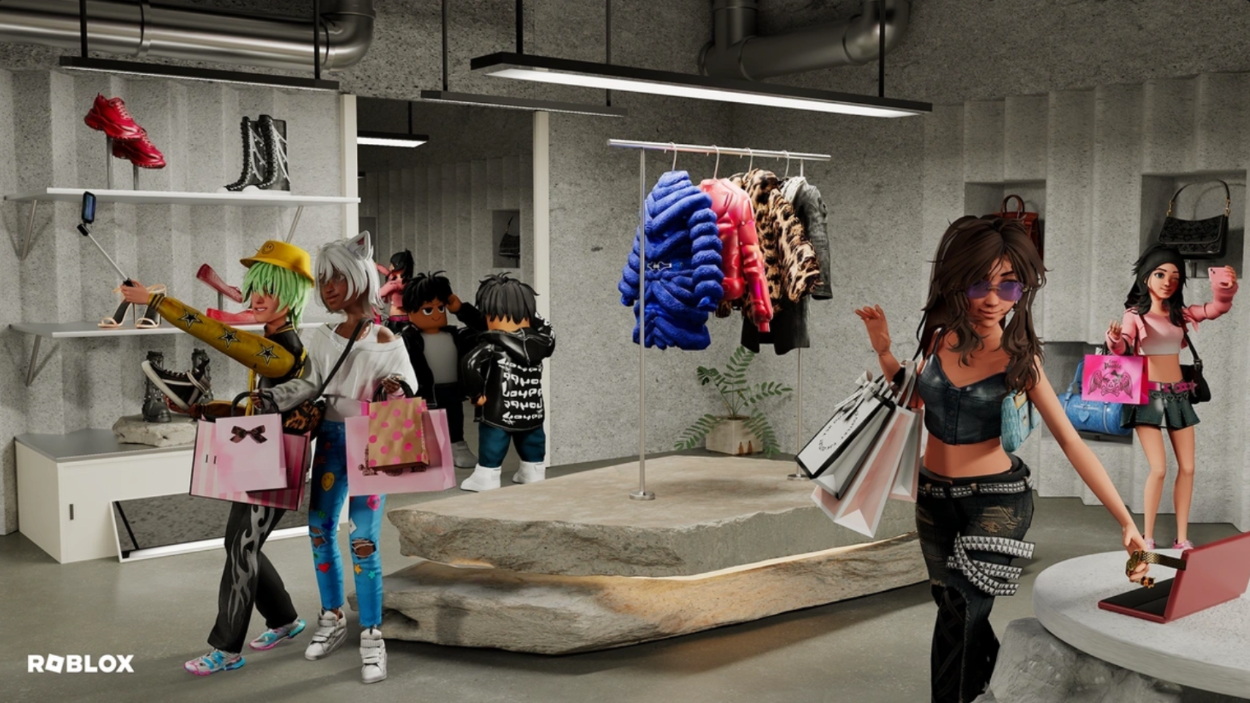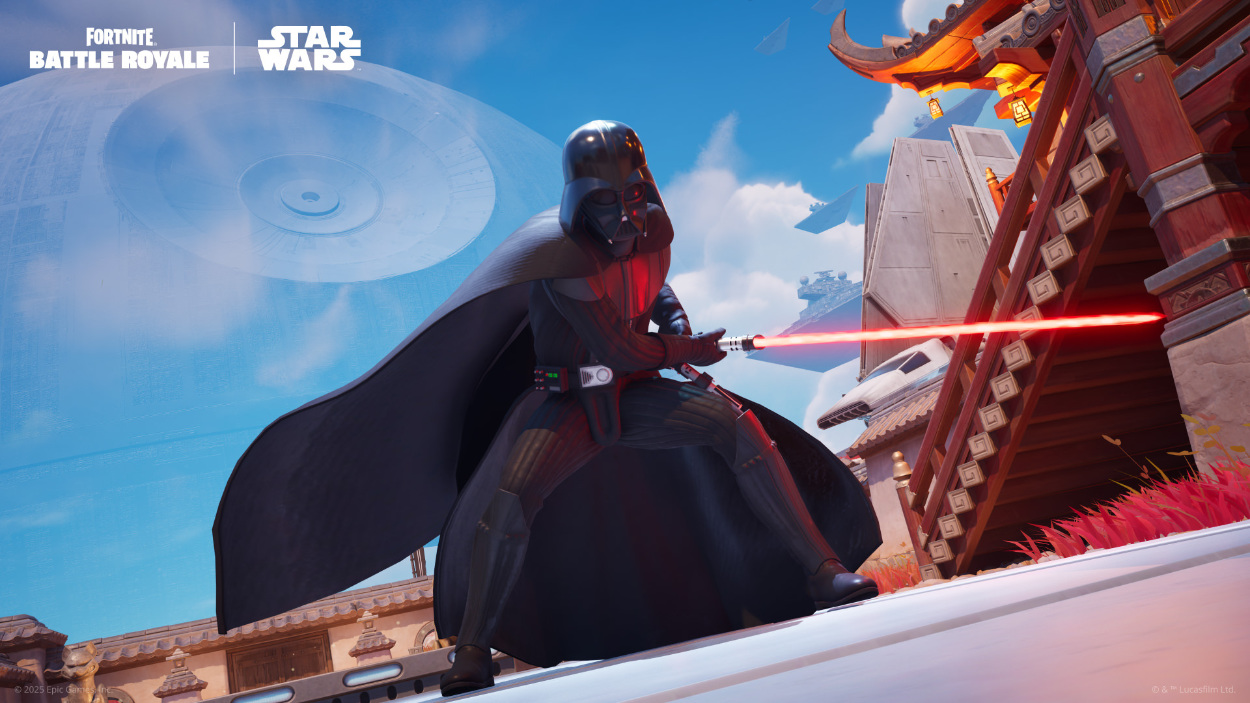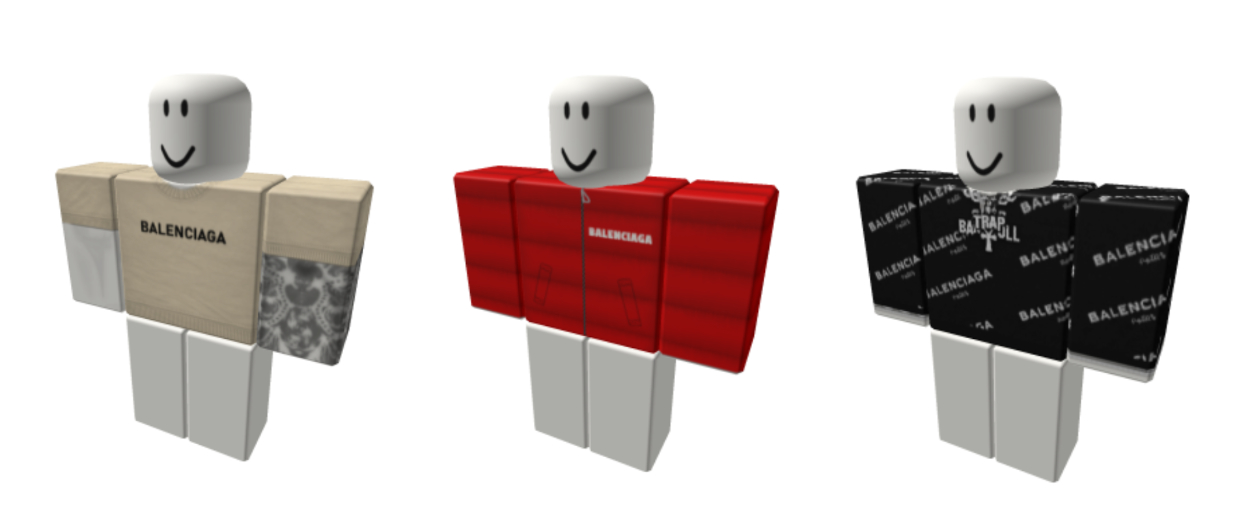
Key Takeaways:
- Roblox is enabling in-game sales of physical products, integrating with Shopify to allow purchases without leaving the platform. This marks a shift from passive social media scrolling to interactive, immersive commerce within digital worlds, allowing brands to meet consumers where they are most engaged.
- Gaming platforms are evolving into highly interactive and adaptive spaces. Fortnite’s new AI-powered conversational Darth Vader, utilising Google’s Gemini Flash model and ElevenLabs TTS, signals a future where digital characters could engage in two-way product discovery, akin to real-world store assistants.
- Brands like Gucci, Balenciaga, and Nike are already investing in gaming environments, shifting from traditional advertising to creating native, immersive brand presences within games. This proactive approach highlights the growing recognition that the future of e-commerce will increasingly reside within these interactive digital worlds.
For over a decade, e-commerce has belonged to the phone. A glowing rectangle in your hand, always on, always listening, filled with algorithmically tuned nudges that felt like your own thoughts. Social media blurred discovery and, in the last couple of years in particular, checkout into a single continuous reflex – and Gen Z especially turned that reflex into muscle memory. They see it (often after hours of passive scrolling, of course), they like it, they buy it, without breaking stride.
But something’s happening. Not a replacement (not yet). A rerouting. Look closely and you’ll see commerce flickering somewhere else. Not in a feed or a shopfront, but in a digital world.
Roblox, long dismissed by some adults as digital lego for tweens, just this week launched real-world product sales for its creator community as part of a wider kit of commerce capabilities. These aren’t in-game skins, or NFT’s, they’re physical, hold-it-in-your-hands merchandise, bought and sold without ever leaving the platform, thanks to hooks into the web’s de facto checkout providers.

That limited edition hoodie your avatar’s wearing? You can own it. So can your friends. And crucially, the purchase doesn’t kick you out to a bolted-on webstore, it’s handled through a Shopify-powered API integration, which means – at least in theory – that users can browse, select, and buy physical goods from inside the game environment itself without breaking the immersion. (In practice, in typical Roblox style, the result looks an awful lot like an iFrame view of an existing Shopify store, rather than a continuous and purposeful UI, but this is still early days.)
The infrastructure is intended to be familiar, but buried beneath the surface. One minute you can be customising your avatar, the next you’re checking out with the real-world version of what they’re wearing. It’s commerce through continuity, an extension of the digital world into the real one.
This is the maturation of something gaming has hinted at for years, that the future of commerce is participatory. That attention, once grabbed, can be held and monetised in ways that align with not just the goals of game-makers and sponsors, but players themselves. That the point isn’t to interrupt play with ads, it’s to let products become part of the play experience, which is inherently a different and more intentional interaction paradigm than other avenues of marketing and selling.

That’s what makes games different from social media. They’re built for involvement, for time spent, and for emotion staked. A TikTok can make you laugh for a second and move on, sure, but a game makes you stay. And there’s a chance that this shift could be what breaks endless, algorithmic scrolling’s hold on where people spend time – and money – on their phones. (Expect eCommerce and web advertising to also be demonstrating a lot of lessons learned about how people will interact with content in the very near future.)
Roblox, though, isn’t alone in pushing innovation in gaming that could have huge ramifications for the way audiences engage with brands and brand promotion. Fortnite just this week rolled out an AI-powered Darth Vader you can talk to – as in have an actual back-and-forth conversation with, running a Gemini Flash model and ElevenLabs TTS under the hood. It’s undeniably very impressive from a technical stand point, but it also acts as a very real signal: that games are fast becoming reactive, adaptive spaces, and that the people behind them have a very keen understanding of behaviour. Games are not just worlds to walk through, or locations to drop in battle royale, but places that respond, making them fundamentally distinct from even the best-targeted social ad campaigns, which are inherently passive in nature.
Think about what that means for commerce: If a digital character can respond to your voice, how long until it can upsell you an item much like a store assistant might? How long until product discovery becomes a two-way street?

Gen Z doesn’t need convincing, they already behave this way. The border between digital and physical is blurring more and more each day. Identity isn’t only tied to wardrobes or make up bags anymore, it lives in loadouts and character builds and collaborative digital worlds that look more like adolescence than Instagram ever did. When you buy something inside a game, you’re not simply making a purchase, you’re affirming who you are. Over half (56%) of Gen Z say styling their avatar is more important to them than styling themselves in the physical world. l.
So no, the phone isn’t going away. In fact it’s where most game players live these days. But the apps that dominated Gen Z’s commerce journey – Instagram, TikTok, Snapchat – now face competition from something more immersive. Less scrolling, more storytelling.
The way people spend their time has been changing for a long time, and there’s no denying that platforms like Roblox and Fortnite are pulling younger audiences away from traditional apps and feeds. The change isn’t happening overnight, but it is happening, and it’s especially more pronounced for Gen Z and Gen Alpha.
Engagement strategies devised pre-pandemic and built on optimising scroll depth and push notifications are fast becoming outdated. The next generation of customers is socialising, shopping and self expressing inside game engines, and the gravity is only pulling harder in that direction.


Brands like Gucci, Balenciaga, and Nike are not waiting to see how the digital world pans out, they’ve already experimented, embedding into the games people know and love. They’re thinking less like advertisers and more like set designers, building presence that feel native to these environments, not just bolted on.
The future of e-commerce probably won’t look like a banner ad or a product grid. It’s more likely to be a moment inside a story, inside a game, that makes the person playing it think, yes, that’s me. Because in the not too distant future, it’s likely that the next purchase isn’t happening on a home screen, but in a digital world the buyer is already living in.

